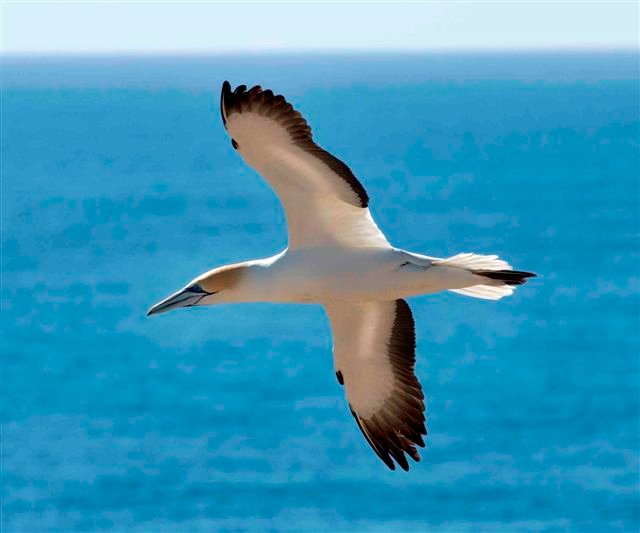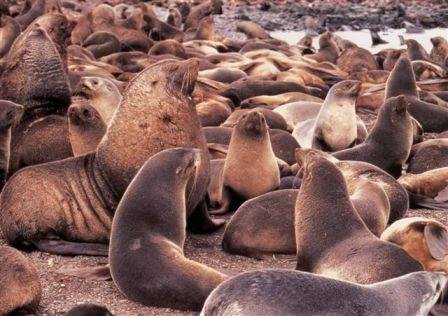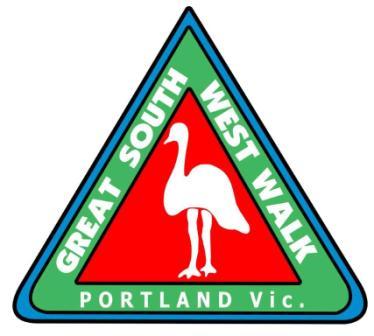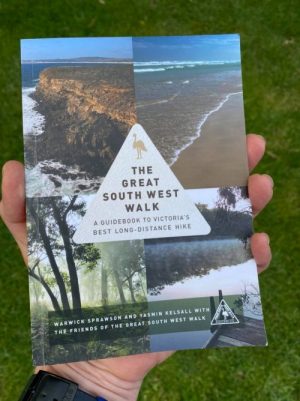Gannet Rookery and Seal Colony
The ONLY mainland Gannet Rookery found in Australia is located on the tip of Point Danger a short distance from the city of Portland. These birds are the overflow from the nearby colony on Lawrence Rocks.
During the breeding season their numbers can swell to many hundreds.
Keep an eye out for the gannets feeding. They are majestic in flight and are often seen gliding on air currents above the ocean and then suddenly go into and amazing high speed dive with enough momentum to carry them several metres below the surface to catch their prey. Their diet consists of the smaller bait fish that can gather in large schools. These schools of fish are part of the chain from tiny Krill right through to Blue Whales, that all feed in the nutrient rich waters created by the local phenomenon known as the Bonney Upwelling.
The birds are protected from their main predator, the fox, by a fenced enclosure. During the breeding season they also become victims of the Australian Raven (Crow) which destroys their eggs and can prey on freshly hatched chicks.

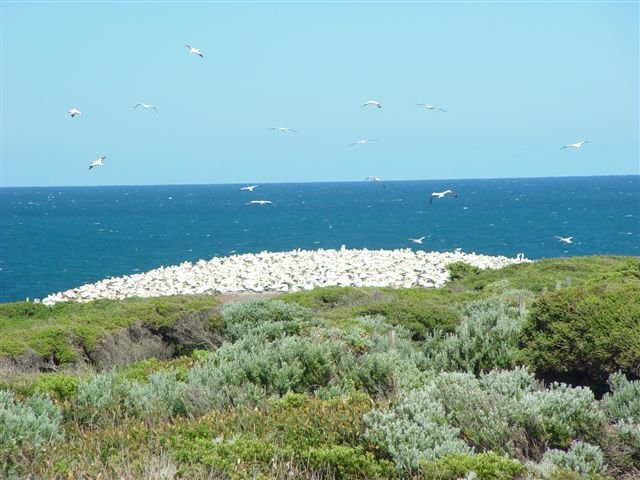
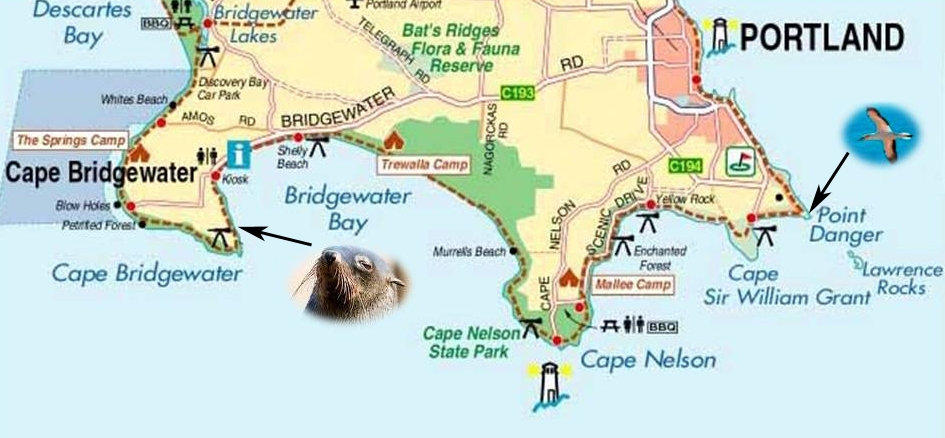
The Fur Seal Colony
The mainland Fur Seal colony that has established at Cape Bridgewater is one of only a few in Australia. The breeding colony is thought to number some 700 seals, however, these numbers vary from day to day, times of the day and season to season.
Viewing them from the cliff tops above can be an uplifting experience. You will need to keep in mind however that you will be observing from very near the location of Victoria’s highest above sea level cliffs. This will make the animals appear somewhat smaller than may have been expected. Some seals are likely to be in the water while others may be sunning themselves on the rock ledges or inside the natural cave that is formed underneath the viewing platform, and out of view.
Take some time to look as you may not see anything at first glance. Lookout further for whales and the telltale sign of their ‘water spout’. You will need to keep scanning the area and remember that they are usually, but not always, much further out from the cliffs and will surface on average every 10 minutes.
Walking to the seals from the Bridgewater kiosk (see Map) is challenging particularly for young children and the elderly. A much longer but possibly more scenic and easier walk (more downhill at the end) is to do a car shuttle, leaving one car at the kiosk area and drive a second to the Blowholes car park. You can now begin the 2.5 to 3 hour walk from the Blowholes via the Petrified Forest and the Seals and back to where you have left your second car.
